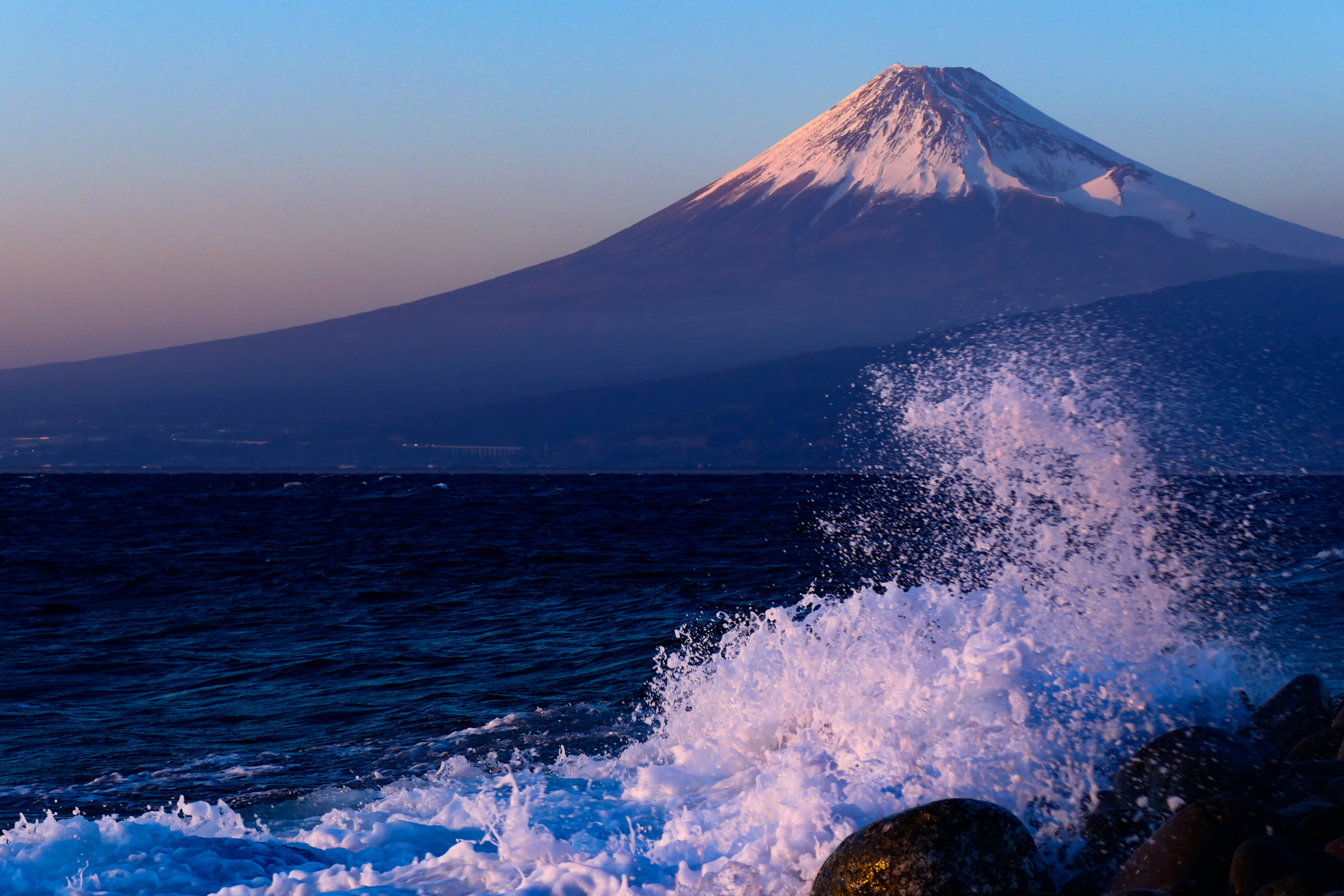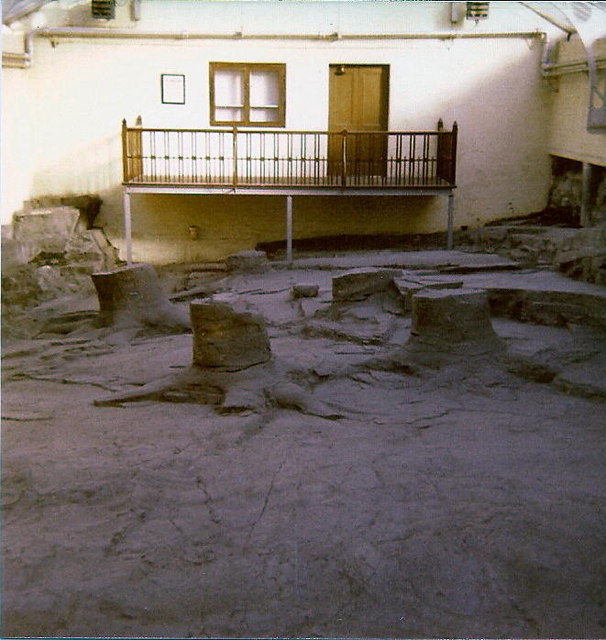|
Mount Ōmuro (Shizuoka)
is a -high cinder cone volcano in the Izu-Tobu volcano field of Itō, Shizuoka, Japan. At the independent peak, the yearly mountain burning that has been performed for more than 700 years is carried out in the early spring,�山に炎 伊豆に春��『読売新聞』朝刊2020年2月25日(社会面)2020年2月29日閲覧 so it is often covered with annual plants and is a symbol of Itō. The mountain is designated as a national natural monument and part of Fuji-Hakone-Izu National Park. Gallery File:Mount_Omuro_(Izu_Peninsula)_20100426_(B).jpg, From the northwest. File:Mount_Ōmuro_20120218_b.jpg, Symbolic pyroclastic cone of the Izu-Tobu volcano field. File:Omuroyama_-01.jpg, Looking up from the north foot. External links The story of the land of Izu pages 82-87in Japanese - |
Itō, Shizuoka
280px, Itō City Hall is a city located on the eastern shore of the Izu Peninsula in Shizuoka Prefecture, Japan. , the city had an estimated population of 63,343 and a population density of 510 persons per square kilometer. The total area was . Geography Itō is located in eastern Shizuoka Prefecture, on the northeast corner of Izu Peninsula, facing Sagami Bay on the Pacific Ocean. The landscape is hilly, and the heavily indented coastline is scenic. Much of the coastal area of the city is within the Fuji-Hakone-Izu National Park, and due to this, the city is noted for its onsen hot springs with many hotels and resorts. It is located within the Izu-Tobu volcanic zone. Due to its proximity to the Tokyo metropolis and ease of transportation, it has been noted as the most visited national park in all Japan. Surrounding municipalities Shizuoka Prefecture * Atami * Higashiizu * Izu * Izunokuni Demographics Per Japanese census data, the population of Itō peaked in around the yea ... [...More Info...] [...Related Items...] OR: [Wikipedia] [Google] [Baidu] |
Shizuoka Prefecture
is a Prefectures of Japan, prefecture of Japan located in the Chūbu region of Honshu. Shizuoka Prefecture has a population of 3,555,818 and has a geographic area of . Shizuoka Prefecture borders Kanagawa Prefecture to the east, Yamanashi Prefecture to the northeast, Nagano Prefecture to the north, and Aichi Prefecture to the west. Shizuoka (city), Shizuoka is the capital and Hamamatsu is the largest city in Shizuoka Prefecture, with other major cities including Fuji, Shizuoka, Fuji, Numazu, and Iwata, Shizuoka, Iwata. Shizuoka Prefecture is located on Japan's Pacific Ocean coast and features Suruga Bay formed by the Izu Peninsula, and Lake Hamana which is considered to be one of Japan's largest lakes. Mount Fuji, the tallest volcano in Japan and cultural icon of the country, is partially located in Shizuoka Prefecture on the border with Yamanashi Prefecture. Shizuoka Prefecture has a significant Motor vehicle, motoring heritage as the founding location of Honda, Suzuki Motor C ... [...More Info...] [...Related Items...] OR: [Wikipedia] [Google] [Baidu] |
Japan
Japan is an island country in East Asia. Located in the Pacific Ocean off the northeast coast of the Asia, Asian mainland, it is bordered on the west by the Sea of Japan and extends from the Sea of Okhotsk in the north to the East China Sea in the south. The Japanese archipelago consists of four major islands—Hokkaido, Honshu, Shikoku, and Kyushu—and List of islands of Japan, thousands of smaller islands, covering . Japan has a population of over 123 million as of 2025, making it the List of countries and dependencies by population, eleventh-most populous country. The capital of Japan and List of cities in Japan, its largest city is Tokyo; the Greater Tokyo Area is the List of largest cities, largest metropolitan area in the world, with more than 37 million inhabitants as of 2024. Japan is divided into 47 Prefectures of Japan, administrative prefectures and List of regions of Japan, eight traditional regions. About three-quarters of Geography of Japan, the countr ... [...More Info...] [...Related Items...] OR: [Wikipedia] [Google] [Baidu] |
Cinder Cone
A cinder cone or scoria cone is a steep, volcanic cone, conical landform of loose pyroclastic rock, pyroclastic fragments, such as volcanic ash, clinkers, or scoria that has been built around a volcanic vent. The pyroclastic fragments are formed by explosive eruptions or lava fountains from a single, typically cylindrical, vent. As the gas-charged lava is blown violently into the air, it breaks into small fragments that solidify and fall as either cinders, clinkers, or scoria around the vent to form a cone that is often symmetrical, with slopes between 30° and 40° and a nearly circular base. Most cinder cones have a bowl-shaped volcanic crater, crater at the summit. Mechanics of eruption Cinder cones range in size from tens to hundreds of meters tall. They are composed of loose pyroclastic material (Scoria, cinder or scoria), which distinguishes them from ''spatter cones'', which are composed of agglomerated volcanic bombs. The pyroclastic material making up a cinder cone ... [...More Info...] [...Related Items...] OR: [Wikipedia] [Google] [Baidu] |
Volcano
A volcano is commonly defined as a vent or fissure in the crust of a planetary-mass object, such as Earth, that allows hot lava, volcanic ash, and gases to escape from a magma chamber below the surface. On Earth, volcanoes are most often found where tectonic plates are diverging or converging, and because most of Earth's plate boundaries are underwater, most volcanoes are found underwater. For example, a mid-ocean ridge, such as the Mid-Atlantic Ridge, has volcanoes caused by divergent tectonic plates whereas the Pacific Ring of Fire has volcanoes caused by convergent tectonic plates. Volcanoes resulting from divergent tectonic activity are usually non-explosive whereas those resulting from convergent tectonic activity cause violent eruptions."Mid-ocean ridge tectonics, volcanism and geomorphology." Geology 26, no. 455 (2001): 458. https://macdonald.faculty.geol.ucsb.edu/papers/Macdonald%20Mid-Ocean%20Ridge%20Tectonics.pdf Volcanoes can also form where there is str ... [...More Info...] [...Related Items...] OR: [Wikipedia] [Google] [Baidu] |
Izu-Tobu
is a large, dominantly basaltic range of volcanoes on the east side of the Izu Peninsula which lies on the Pacific Ocean, Pacific coast of the island of Honshu in Japan. The field covers a total area of 400 km2. The only recorded activity was a submarine phreatic eruption, between the city of Ito, Shizuoka, Ito and Hatsushima island, that lasted for just 10 minutes in 1989. Ito, home to 74,000 people, is known for its hot springs. Morphology The field covers the east side of the Izu Peninsula. It consists of several small stratovolcanoes (mostly Pleistocene in age) and overlapping pyroclastic cones, which covers 400 km2 in area. There are 70 young monogenetic volcanoes on land. Kawagodaira maar, which is about 3,000 years old, produced a large Holocene eruption that sent pyroclastic flows over a wide area. Eruptions 1989 eruption The only recorded eruption was an event on 13 July 1989. Two earthquakes, on 30 June and 9 July took, place on the Izu-Tobu ... [...More Info...] [...Related Items...] OR: [Wikipedia] [Google] [Baidu] |
読売新聞
The is a Japanese newspaper published in Tokyo, Osaka, Fukuoka, and other major Japanese cities. It is one of the five major newspapers in Japan; the other four are ''The Asahi Shimbun'', the ''Chunichi Shimbun'', the ''Mainichi Shimbun'', and the ''Nihon Keizai Shimbun''. It is headquartered in Otemachi, Chiyoda, Tokyo.'' It is a newspaper that represents Tokyo and generally has a conservative orientation. It is one of Japan's leading newspapers, along with the Osaka-based liberal (Third Way) ''Asahi Shimbun'' and the Nagoya-based social democratic ''Chunichi Shimbun''. This newspaper is well known for its pro-American stance among major Japanese media. It is published by regional bureaus, all of them subsidiaries of The Yomiuri Shimbun Holdings, Japan's largest media conglomerate by revenue and the second largest media conglomerate by size behind Sony,The Yomiuri Shimbun Holdings is the largest media conglomerate by revenue in Japan, while Sony is Japan's largest medi ... [...More Info...] [...Related Items...] OR: [Wikipedia] [Google] [Baidu] |
Fuji-Hakone-Izu National Park
is a national park in Yamanashi, Shizuoka, and Kanagawa Prefectures, and western Tokyo Metropolis, Japan. It consists of Mount Fuji, Fuji Five Lakes, Hakone, the Izu Peninsula, and the Izu Islands. Fuji-Hakone-Izu National Park covers . Rather than being a specific spot, the park is a collection of dispersed tourist sites that dot the region. The farthest point south, the isle of Hachijō-jima, is several hundred kilometers from Mount Fuji. The park includes a variety of geographic features including natural hot springs, coastlines on the Pacific, mountainous areas, lakes, and more than 1,000 volcanic islands. Vegetation in the park ranges from species of mountainous trees to the subtropical vegetation of the Izu Islands. Fuji-Hakone-Izu National Park was established on February 2, 1936, as Fuji-Hakone National Park, and is one of the first four national parks established in Japan. In 1950, the Izu islands were added to the park, a change that also reflected in the park's r ... [...More Info...] [...Related Items...] OR: [Wikipedia] [Google] [Baidu] |
Izu Peninsula
The is a mountainous peninsula with a deeply indented coastline to the west of Tokyo on the Pacific Ocean, Pacific coast of the island of Honshu, Japan, the largest of the four main islands of Japan. Formerly known as Izu Province, Izu peninsula is now a part of Shizuoka Prefecture. The peninsula has an area of and its estimated population in 2005 was 473,942 people. The peninsula's populated areas are located primarily on the north and east. Geology Tectonically, the Izu peninsula results from the Philippine Sea Plate colliding with the Okhotsk Plate at the Nankai Trough. The Philippine Sea Plate, the Amurian Plate, and the Okhotsk Plate meet at Mount Fuji, a triple junction. The peninsula itself lies on the Philippine Sea Plate. The southern portion of the peninsula is composed largely of breccia, and the central and northern portions consist of numerous highly eroded volcanoes. The Amagi Mountain Range dominates the center of the peninsula with Mount Amagi () and Mount ... [...More Info...] [...Related Items...] OR: [Wikipedia] [Google] [Baidu] |
Geopark
A geopark is a protected area with internationally significant geology within which Sustainability, sustainable development is sought and which includes tourism, conservation, education and research concerning not just geology but other relevant sciences. In 2005, a European Geopark was defined as being: "a territory with a particular geological heritage and with a sustainable territorial development....the ultimate aim of a European Geopark is to bring enhanced employment opportunities for the people who live there." Today the geopark is virtually synonymous with the UNESCO geopark, which is defined and managed under the voluntary authority of UNESCO's International Geoscience Programme, International Geoscience and Geoparks Programme (IGGP). UNESCO provides a standard for geoparks and a certification service to territories that apply for it. The service is available to member states of UNESCO. The list of members is not the same as the member states of the United Nations. Memb ... [...More Info...] [...Related Items...] OR: [Wikipedia] [Google] [Baidu] |
Mountains Of Shizuoka Prefecture
A mountain is an elevated portion of the Earth's crust, generally with steep sides that show significant exposed bedrock. Although definitions vary, a mountain may differ from a plateau in having a limited summit area, and is usually higher than a hill, typically rising at least above the surrounding land. A few mountains are isolated summits, but most occur in mountain ranges. Mountains are formed through tectonic forces, erosion, or volcanism, which act on time scales of up to tens of millions of years. Once mountain building ceases, mountains are slowly leveled through the action of weathering, through slumping and other forms of mass wasting, as well as through erosion by rivers and glaciers. High elevations on mountains produce colder climates than at sea level at similar latitude. These colder climates strongly affect the ecosystems of mountains: different elevations have different plants and animals. Because of the less hospitable terrain and climate, mountains te ... [...More Info...] [...Related Items...] OR: [Wikipedia] [Google] [Baidu] |







